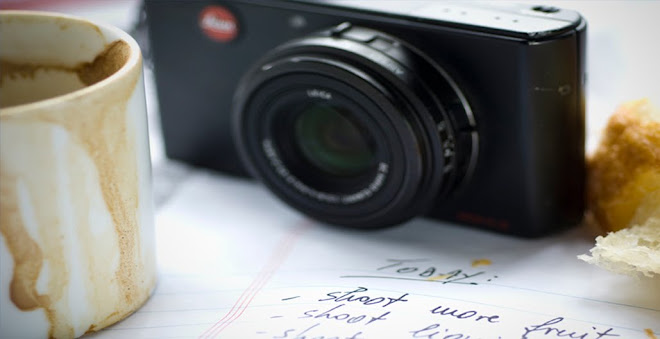Lighting is probably one of the most important aspects of shooting food, and for that matter anything else. The camera is just an instrument that helps you capture the light. The composition, the angle, the shutter speed and the focal length are also important, but to me they are the "technical" part of the process, where the lighting is the "creative" part of it, so the choices are endless.
Obviously there are as many possibilities to lighting, let's say an apple, as there are photographers, but today I will cover one very basic way of doing it which is simple and effective.
Before I start I would like to go over some of the variables that come into play when designing and choosing the light for a shoot. They are: direction(1), proximity(2), height(3) ,power(4), and size(5). They are all critical and each can change the look of the final shoot dramatically. (1)Direction: Food is very rarely lit from the front, like you would a person. If the set-up was similar to a clock, the food would be in the middle, while the light would be anywhere between 9 and 3. (2)Proximity: light has the physical capability of bending, of wrapping around an object, so, the closer to the object the more it will fill in the "dark"areas behind the object. The further from the subject, the harder the shadows and the contrast between the dark and light would be stronger.The (3)height of the light will dictate how much of a shadow you will end up with; the higher the light the shorter the shadow. The (4)power of the light will obviously dictate the distance of the light from the object and also it will affect the camera shutter speed and the lens aperture. The (5)size of the light is probably one of the more important of all these variables. A small, direct light will give you a strong contrast between light and dark, while a large light, will give you a soft, diffused look. None are better than the other, it all depends on the final look you would want to accomplish.
So, back to simple solution I was talking about at the beginning. If you don't have a light, always use a window as your light source. The (5)larger the window the better, and the less direct (4)sun light comes through the better. Place the food between the camera and the light source, and then either adjust the camera position or of the food so you can end up with the angle you think is the best. After you take your first shot, you will probably notice a relatively strong shadow opposite the light source. If you would like to "take it down" a bit, you can try to "fill" it by bouncing some of the light from the main source, back towards the shadow side. You can use any white surface available, paper, foam core, napkin, etc. You would need a third hand or a device to hold it in place. The position of the "fill" is relative to the main light, and typically is diagonally across. (i.e. if the light is at 10 on the dial, the fill light should be at 4)
So, to recapitulate: light at 10, camera at 6, fill light at 4. From here you can adjust and test the rest of the variables, the height of the light, the angle of the camera, the distance of the main light from the food, etc. . Practice makes better!... but it's a good beginning. Eat good food! Alex




